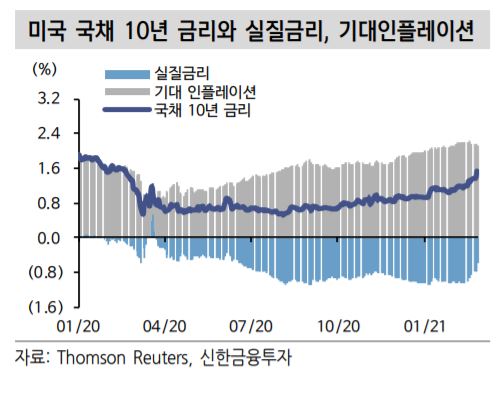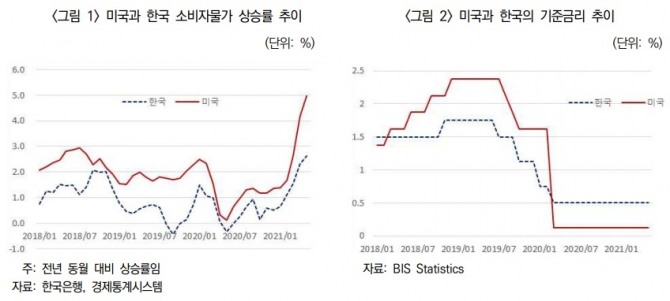
1. 금리와 인플레이션의 개념과 관계성
금리와 인플레이션은 경제에서 중요한 개념 중 하나입니다. 금리는 돈을 빌리는 비용을 나타내며, 인플레이션은 물가 상승률을 의미합니다. 이 둘은 서로 밀접한 관계를 가지고 있습니다. 일반적으로 인플레이션이 상승하면 금리도 상승하게 됩니다. 이는 중앙은행이 인플레이션을 억제하기 위해 금리를 인상하기 때문입니다. 반대로 인플레이션이 하락하면 금리도 하락하게 됩니다. 이는 경기 부양을 위해 중앙은행이 금리를 낮추기 때문입니다. 따라서 금리와 인플레이션은 서로 영향을 주고받는 관계를 가지고 있습니다.
2. 금리 변동이 인플레이션에 미치는 영향
금리 변동은 인플레이션에 큰 영향을 미칩니다. 일반적으로 금리가 오르면 돈을 빌리는 것이 더 비싸지기 때문에 소비가 줄어들고, 이는 생산량 감소와 물가 상승으로 이어집니다. 반대로 금리가 내려가면 돈을 빌리는 것이 더 저렴해져 소비가 증가하고, 이는 생산량 증가와 물가 하락으로 이어집니다. 따라서 중앙은행은 인플레이션을 조절하기 위해 금리를 조절합니다.
3. 인플레이션 대응을 위한 금리 조절 방안
인플레이션 대응을 위한 금리 조절 방안에 대해 알아보겠습니다. 인플레이션이란 물가 상승률을 의미하며, 이는 경제에 부정적인 영향을 미칩니다. 따라서 중앙은행은 인플레이션 대응을 위해 금리를 조절합니다. 일반적으로 인플레이션이 높을 경우 금리를 높이고, 인플레이션이 낮을 경우 금리를 낮춥니다. 이를 통해 경제 안정화를 도모할 수 있습니다. 하지만 금리 조절은 경제에 다양한 영향을 미치므로 신중한 판단이 필요합니다.
4. 금리 변동에 따른 경제 활동의 변화
금리 변동은 경제 활동에 큰 영향을 미칩니다. 일반적으로 금리가 낮아지면 대출이 쉬워지고 소비가 증가하며, 금리가 높아지면 대출이 어려워지고 소비가 감소합니다. 이는 기업의 투자 활동에도 영향을 미치며, 금리가 낮아지면 기업의 투자 활동이 증가하고, 금리가 높아지면 투자 활동이 감소합니다. 따라서, 금리 변동은 경제 활동의 변화를 예측하는 데 중요한 지표입니다.
5. 금리와 인플레이션 예측을 위한 주요 지표 및 분석 방법
금리와 인플레이션 예측을 위한 주요 지표는 GDP, 실업률, 소비자물가지수 등이 있습니다. 이들 지표를 통해 경제의 상황을 파악하고, 이에 따른 금리와 인플레이션 예측을 할 수 있습니다. 분석 방법으로는 시계열 분석, 회귀분석 등이 있으며, 이를 통해 예측 모델을 구축할 수 있습니다. 하지만 경제 상황은 예측하기 어렵기 때문에, 예측 결과에 대한 불확실성을 인지하고, 적극적인 대처가 필요합니다.
#금리 #인플레이션 #경제 #중앙은행 #물가상승 #생산량 #소비 #대출 #투자활동 #GDP #실업률 #소비자물가지수 #시계열분석 #회귀분석 #예측모델 #불확실성 #경제안정화
1. The concept and relationship between interest rates and inflation
Interest rates and inflation are two important concepts in economics. Interest rates represent the cost of borrowing money, while inflation represents the rate of inflation. These two have a close relationship with each other. Generally, when inflation rises, interest rates also rise. This is because central banks raise interest rates to curb inflation. Conversely, when inflation falls, interest rates also fall. This is because central banks lower interest rates to stimulate the economy. Therefore, interest rates and inflation have a mutually influencing relationship.
2. Effects of interest rate changes on inflation
Changes in interest rates have a huge impact on inflation. Generally, when interest rates rise, borrowing money becomes more expensive, so consumption decreases, which leads to lower output and higher prices. Conversely, when interest rates fall, it becomes cheaper to borrow money, which increases consumption, which in turn increases production and lowers prices. Therefore, central banks adjust interest rates to control inflation.
3. Measures to control interest rates to respond to inflation
Let's look at how to adjust interest rates to respond to inflation. Inflation refers to the rate of inflation, which negatively affects the economy. Therefore, central banks adjust interest rates to counter inflation. Generally, interest rates are raised when inflation is high and interest rates are lowered when inflation is low. This can promote economic stabilization. However, interest rate adjustments have various effects on the economy, so careful judgment is required.
4. Changes in economic activity due to changes in interest rates
Changes in interest rates have a huge impact on economic activity. In general, lower interest rates make it easier to borrow and increase consumption, while higher rates make it harder to borrow and decrease consumption. This also affects the investment activities of companies, with lower interest rates increasing their investment activities and higher interest rates decreasing their investment activities. Therefore, interest rate fluctuations are an important indicator for predicting changes in economic activity.
5. Key Indicators and Analysis Methods for Forecasting Interest Rates and Inflation
Key indicators for forecasting interest rates and inflation include GDP, unemployment, and the Consumer Price Index. Through these indicators, it is possible to understand the state of the economy and to predict interest rates and inflation accordingly. Analysis methods include time series analysis and regression analysis, through which predictive models can be built. However, since the economic situation is difficult to predict, it is necessary to be aware of the uncertainty about the forecast results and to actively deal with it.
#interest rate #inflation #economy #central bank #inflation #production #consumption #lending #investment activity #GDP #unemployment rate #consumer price index #time series analysis #regression analysis #forecasting model #uncertainty #economic stabilization
1.金利とインフレの概念と関係
金利とインフレは経済にとって重要な概念の一つです。金利はお金を借りる費用を表し、インフレは物価上昇率を意味します。両者は互いに密接な関係を持っています。通常、インフレが上昇すると金利も上昇します。これは、中央銀行がインフレを抑えるために金利を引き上げるためです。逆にインフレが下落すると、金利も下落することになります。これは、景気を扶養するために中央銀行が金利を下げるためです。したがって、金利とインフレは互いに影響を及ぼす関係を持っています。
2. 金利変動がインフレに与える影響
金利変動はインフレに大きな影響を与えます。一般的に、金利が上がると、お金を借りるほうが高価になるため、消費量が減り、生産量の減少と物価の上昇につながります。逆に、金利が下がると、お金を借りるほうが安くなり、消費が増加し、生産量の増加と物価の低下につながります。したがって、中央銀行はインフレを調整するために金利を調整します。
3. インフレ対応のための金利調整方案
インフレ対応のための金利調整方法について学びましょう。インフレとは、物価上昇率を意味し、これは経済に悪影響を及ぼす。したがって、中央銀行はインフレ対応のために金利を調整します。通常、インフレが高い場合は金利を上げ、インフレが低い場合は金利を下げます。これにより経済の安定化を図ることができます。しかし、金利調整は経済に多様な影響を及ぼすので、慎重な判断が必要です。
4. 金利変動による経済活動の変化
金利変動は経済活動に大きな影響を与えます。一般的に、金利が低くなると融資が容易になり、消費が増加し、金利が高くなると融資が難しくなり、消費が減少する。これは企業の投資活動にも影響し、金利が低くなると企業の投資活動が増加し、金利が高くなると投資活動が減少します。したがって、金利変動は経済活動の変化を予測する上で重要な指標である。
5.金利とインフレ予測のための主要な指標と分析方法
金利とインフレ予測の主な指標には、GDP、失業率、消費者物価指数などがあります。これらの指標により、経済の状況を把握し、それに応じた金利とインフレ予測を行うことができます。分析方法には時系列分析、回帰分析などがあり、これにより予測モデルを構築することができます。しかし、経済状況は予測が難しいため、予測結果に対する不確実性を認識し、積極的な対処が必要です。
#金利#インフレ#経済#中央銀行#物価上昇#生産量#消費#ローン#投資活動#GDP#失業率#消費物価指数#時計分析#回帰分析#予測モデル



'잡학다식' 카테고리의 다른 글
| Accor 호텔이란 (0) | 2023.04.14 |
|---|---|
| 마취제란 무엇인가 (0) | 2023.04.13 |
| 열역학이란 무엇인가 (0) | 2023.04.11 |
| 애리조나주의 역사와 문화적 배경 (0) | 2023.04.10 |
| 이부프로펜이란 무엇인가 (0) | 2023.04.10 |



